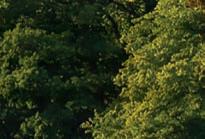

















LIVE LIKE A LAIRD
Indulge yourself on these grand estates





Itineraries included




News & shopping




















Indulge yourself on these grand estates





Itineraries included





Scotland is preparing to welcome you back in 2025: here are some of the best reasons to plan a visit now
Scotland’s Outer Hebrides has been named one of National Geographic’s Best of the World destinations for 2025, thanks to its ‘dramatic landscapes and Celtic heritage’.
The islands, which lie far off Scotland’s west coast

and include such beauties as Barra, Uist, and Lewis & Harris, are worth visiting in 2025 for many reasons, including seeing mystical ancient monuments such as the Calanais Standing Stones (pictured) up close or meeting the makers of
Harris Tweed in their homes. However, with increased focus now expected on the islands over the next 12 months, you should book your accommodation early, as there is only a limited amount across the isles. visitouterhebrides.co.uk
Once largely presided over by clans, and later swept up into the ownership of rich nobles, Scotland’s vast estates, which number 1,100 and cover over 50% of all the rural land in Scotland, give it the dubious title of having the highest concentration of large-scale privately owned land of anywhere in the world.
Nevertheless, since the Victorians made country pursuits fashionable, many estates have opened their gates to sporting activities, while many others have diversi ed: some have become luxury hotels and others have focused on the conservation and restoration of the local landscape. More still have become part of charitable organisations like the National Trust for Scotland.
Whether you’re looking to connect with nature or live out those dreams of being a Scottish laird, a visit to an estate will enrich your experience of Scotland, and your understanding of the nation’s often tumultuous history.

Words by EMMA GIBBS




From Monarch of the Glen experiences to wild nature reserves, here are some of Scotland’s most incredible estates




This 23,000-acre reserve, 50 miles north-west of Inverness, where owner Paul Lister sees himself as ‘custodian of the land’ is rede ning what a Scottish estate looks like.
Lister has switched the emphasis away from the traditional pursuit of deer stalking towards restoring the ecology of the habitats here – deer are still stalked, but only by the rangers and to control their numbers.
More than a million native trees have been planted at Alladale over the last two decades, red squirrels have been reintroduced, and peatland – vital for capturing carbon – is being restored.
Guests can stay either in the grand Victorian lodge (sleeping 14) or in one of two self-contained cottages in the valley, surrounded by hills and looking towards mountains further west; all accommodation is catered, using produce from the on-site aquaponic gardens and local meat and sh.

Tours of the estate allow guests to see the work being done here rst hand, including the wildcat captive breeding programme, though there’s no better way to explore the outstanding natural landscape here than on foot, enabling you to really appreciate the ‘wilderness’ of its name. alladale.com

Words by HENRIETTA EASTON
A favoured holiday retreat for the Stuarts, Falkland Palace in Fife is one of the finest examples of a Renaissance palace in Scotland


Words by KENNETH STEVEN
The Celtic legends and clan connections of Loch Awe can be discovered by road, rail, and boat, says our local expert


I’m sometimes amused to think just what a difference a few hundred years makes in Scotland. Of course it’s true that daring to travel at all in the Highlands would have been an act of folly before the 1700s, but entering Argyll and the west (the part that I now consider home) would have been a particular bit of madness. Unless, of course, you happened to be a Campbell or a MacDougall; those were the two clans that ruled the roost here for centuries.
In the earliest days of the re-establishment of Scottish independence, Robert the Bruce came to this part of Argyll to subdue some of those still intent on having things their own way. So it’s bristling with history that’s very much in evidence from the moment you arrive.
I can’t think of a more exciting passage of rail travel in Scotland than the route from Glasgow to Oban along the West Highland Line that sweeps around the north end of Loch Awe, after creeping for some time through inland glens. All at once you have an open view down the many miles of the loch, and in front of you, as though conjured by magic for the re-enactment of Macbeth, are the ghostly ruins of mighty Kilchurn Castle out on its promontory. In terms of sheer drama, it’s pretty hard to beat.
The castle dates back to the 1400s and was the domain of the Campbells of Glenorchy for 150 years. I suppose part of what makes it so dramatic is the sheer power and bulk of the mountain behind; the head and shoulders of Ben Cruachan – the mountain that dominates the whole county of Argyll.
There’s a story going back to the time of the first Campbells who built Kilchurn. Colin Campbell was nicknamed the Black Knight of Rhodes: he’d left behind Loch Awe and his wife Lady Margaret to fight in the Crusades. He’d been seven long years in the Holy Land when one night he had a strange and troubling dream; he was so troubled by it that he sought out a priest to confide in. Instead of offering words of comfort, the priest urged


As Stirling’s 900th anniversary celebrations continue, we look back at the royal burgh’s turbulent history

Words by SALLY COFFEY